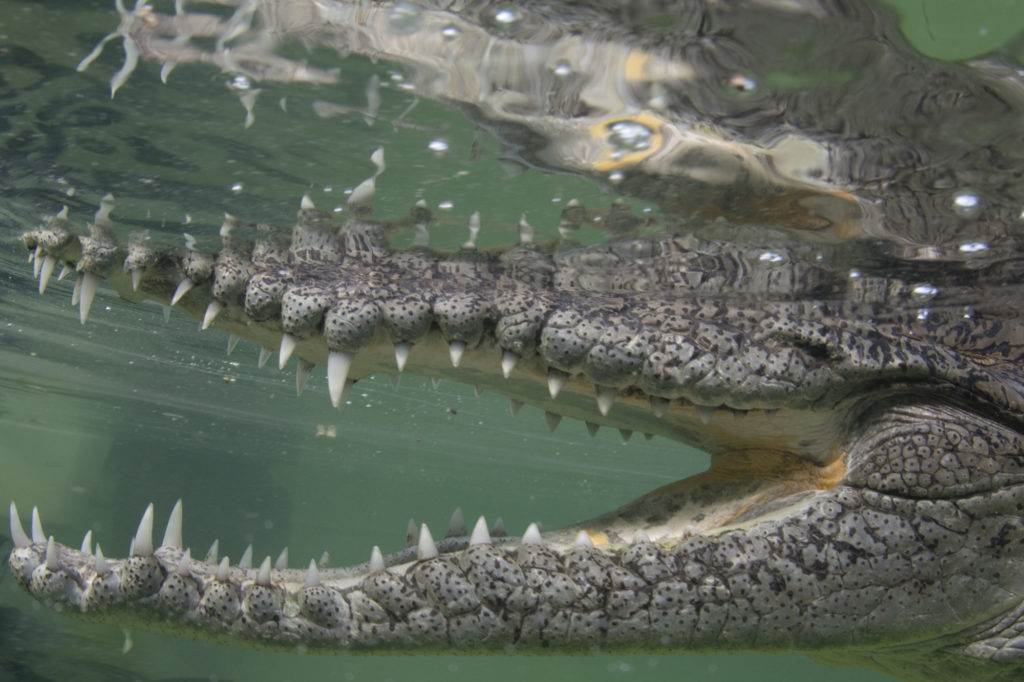
![]() Text and photographs by Kathy Krucker
Text and photographs by Kathy Krucker
January/February, 2017, Vol. 21, No. 4
Descending in a calm Cuban mangrove, I found myself face to face with a pointed jaw protruding razor-sharp teeth of an American crocodile. Terrified, to protect myself, I instinctively place my dome port underwater camera between us.
While these crocs can grow to twenty feet, this one appeared to be a juvenile. After returning to the boat, I discovered that the crew knew this croc. They called him “El Niño.” They approached when his mother didn’t appear. Regardless, small crocs are also capable of using their teeth and powerful jaws to kill their prey. Known for their underwater “death roll,” they drown their victim as they thrash, swallow, or rip it apart. My encounter, while thrilling later, was at the time, beyond my comfort zone.
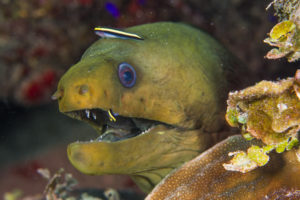 This unique encounter happened on Aggressor Fleet’s Jardines Aggressor I scuba diving trip in Cuba’s Jardines de la Reina or Gardens of the Queen, an archipelago off the southern coast. Named by Christopher Columbus in honor of the Queen of Spain, in 2002, the 840 square miles Jardines de la Reina was established as a National Park. Located in the Caribbean Sea, more than six hundred cays and islands parallel ninety three miles (150 km.) of Cuba’s coastline.
This unique encounter happened on Aggressor Fleet’s Jardines Aggressor I scuba diving trip in Cuba’s Jardines de la Reina or Gardens of the Queen, an archipelago off the southern coast. Named by Christopher Columbus in honor of the Queen of Spain, in 2002, the 840 square miles Jardines de la Reina was established as a National Park. Located in the Caribbean Sea, more than six hundred cays and islands parallel ninety three miles (150 km.) of Cuba’s coastline.
Anglers have long been familiar with the Gardens’ excellent fly fishing. They have used the Avalon, now Jardines Aggressor I, as a base from where they are shuttled to shore to wade and cast for permit, bonefish, and tarpon.
In the past year, following the establishment of diplomacy between the United States and Cuba, Jardines de la Reina has also become a popular scuba destination forJardines Aggressor I, now used as a dive liveaboard.
Spacious public areas include a lounge, dining room, and a top deck hot tub. Cabins, while cozy, are comfortable and attractive. Seven hospitable staff members serve up to twenty divers.
Meals served included typical American-type breakfasts, but dinner was primarily fish and lobster, and more lobster. The abundant seafood was delicious.
Beginning at eight in the morning, we divided into groups to take one of two tenders to various dive sites. A dive master accompanied us pointing out unique fish and critters. The rest of the day was spent either diving or eating—when we weren’t sleeping.
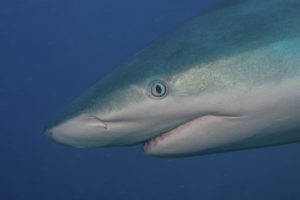 Landscapes include deep canyons, stunning pinnacles, and caves. Healthy mangroves, numerous sponge and black coral covers the reef. Jardines de la Reina hosts a healthy population of silky and Caribbean reef sharks. It was rare to experience a dive without seeing sharks.
Landscapes include deep canyons, stunning pinnacles, and caves. Healthy mangroves, numerous sponge and black coral covers the reef. Jardines de la Reina hosts a healthy population of silky and Caribbean reef sharks. It was rare to experience a dive without seeing sharks.
Meeting “El Niño” was just one highlight in the protected waters of Jardines de la Reina. Its reefs are healthy and representative of the way Caribbean diving used to be.
While photographing sharks was my primary goal, there were colorful reef fish and multiple species of groupers. With my wide angle lens, I could easily lie on the bottom shooting numerous shark photographs. Dozens of Caribbean reef sharks were not at all wary, and would swim very close.
Diving in Jardines is more than crocodiles, sharks, and groupers. The site at Cabezo de la Cubera has schools of yellowtail snappers, tangs, and tarpon as well as sponge, crabs, angelfish, barracudas, nudibranchs, hamlets, and turtles. There were numerous cleaning stations, where small fish ate parasites from motionless snappers, angelfish, barracudas, and turtles.
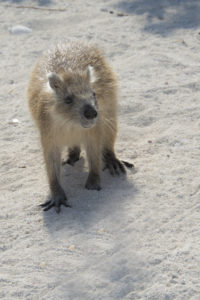 Prior to scheduled night dives, we were offered different options. We could take late afternoon snorkel trips to the mangroves, a skiff to tour of some of the hundreds of islands. We even observed rodent-like stout large-headed hutias on one of the small islands. There was also a presentation on island ecology.
Prior to scheduled night dives, we were offered different options. We could take late afternoon snorkel trips to the mangroves, a skiff to tour of some of the hundreds of islands. We even observed rodent-like stout large-headed hutias on one of the small islands. There was also a presentation on island ecology.
At the time of my visit, Cuba-America relations were becoming normalized. Restrictions still in place required “a meaningful interaction between the United States traveler and Cubans.”
To fulfill this requirement, the Aggressor Fleet’s six day dive package was organized through Oceans for Youth Foundation Cuba’s People to People travel program. The trip included two days in Havana.
Havana’s world-renowned marine biologist, Dr. Julio Baisre gave us a presentation on Cuba’s fisheries ecology, history, and importance especially in Jardines de la Reina. We also enjoyed tours Old Havana, a drive along the Malecon, a visit to a cigar and rum store near El Morro followed by touring the Fortress of El Morro and Plaza de San Francisco. There were scheduled stops for lunch and dinner at several well-known restaurants.
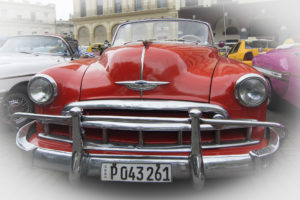 One cannot help but be captivated and amazed by the classic cars seen in and around Havana. Hiring a driver, we spent several hours in Aramis’ 1956 hot pink Park Slope New York Chevy convertible.
One cannot help but be captivated and amazed by the classic cars seen in and around Havana. Hiring a driver, we spent several hours in Aramis’ 1956 hot pink Park Slope New York Chevy convertible.
Cuba may be only ninety miles from the shoreline of Florida, but the severance of diplomacy isolated the country. This colorful culture and interesting country will change as it becomes more accessible to Americans. Get there as soon as possible to enjoy its “time warp.”
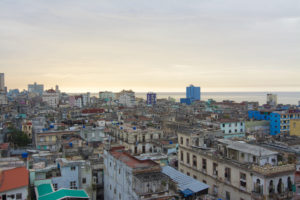 If you go diving: After two days in Havana, we traveled by bus on a seven hour drive to Jucaro to board the Jardines Aggressor I. Driving through rural Cuba, we were able to view how many Cuban people still live and farm using ox-drawn tillers and other non-mechanized modes of transportation. Upon arrival in Jucaro, the energetic crew of the Jardines Aggressor I met us. In additional to some great diving with an exceptional crew, the meals and snacks aboard were delicious. After six days, we were returned by bus to Havana’s Jose Marti airport for our departure.
If you go diving: After two days in Havana, we traveled by bus on a seven hour drive to Jucaro to board the Jardines Aggressor I. Driving through rural Cuba, we were able to view how many Cuban people still live and farm using ox-drawn tillers and other non-mechanized modes of transportation. Upon arrival in Jucaro, the energetic crew of the Jardines Aggressor I met us. In additional to some great diving with an exceptional crew, the meals and snacks aboard were delicious. After six days, we were returned by bus to Havana’s Jose Marti airport for our departure.
